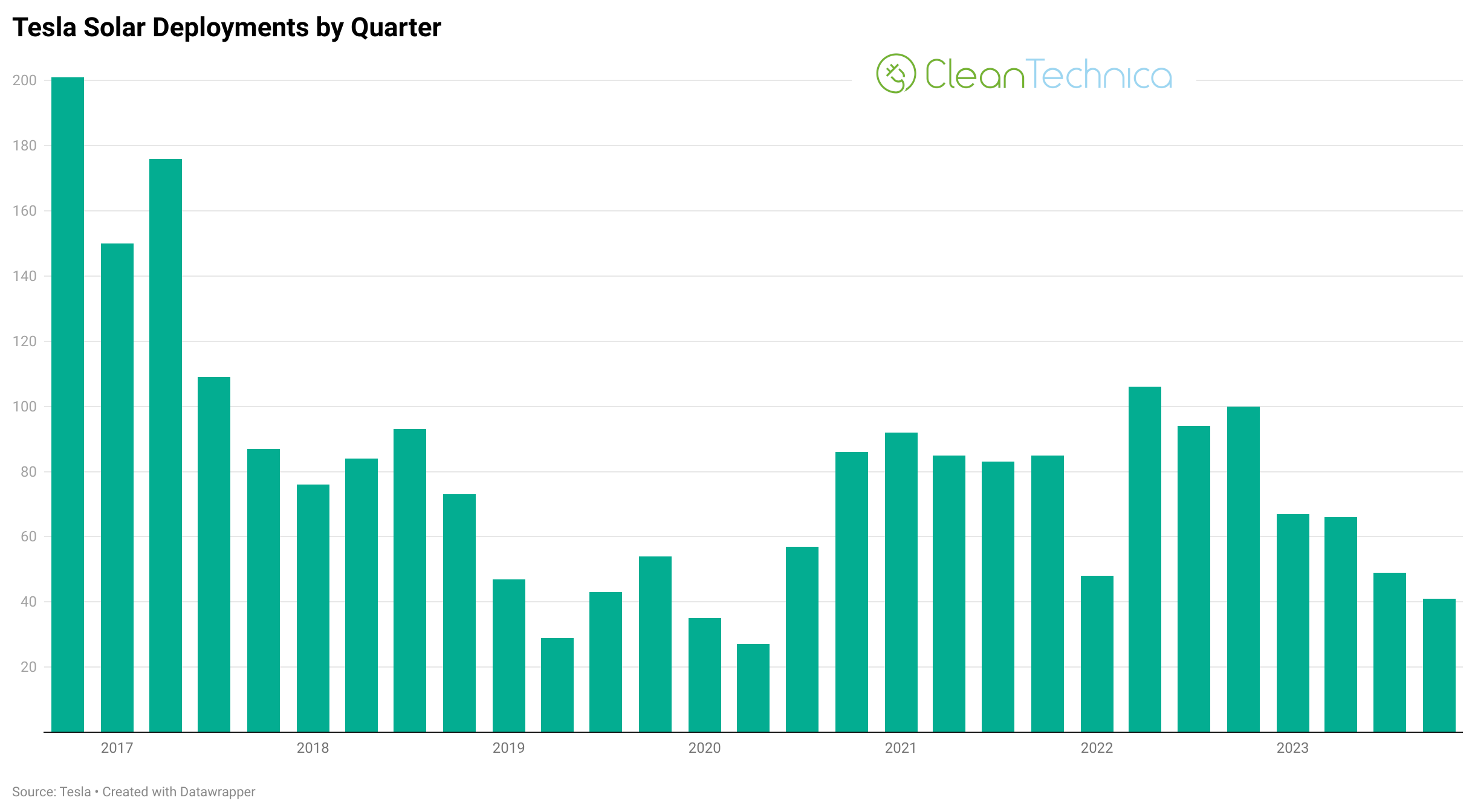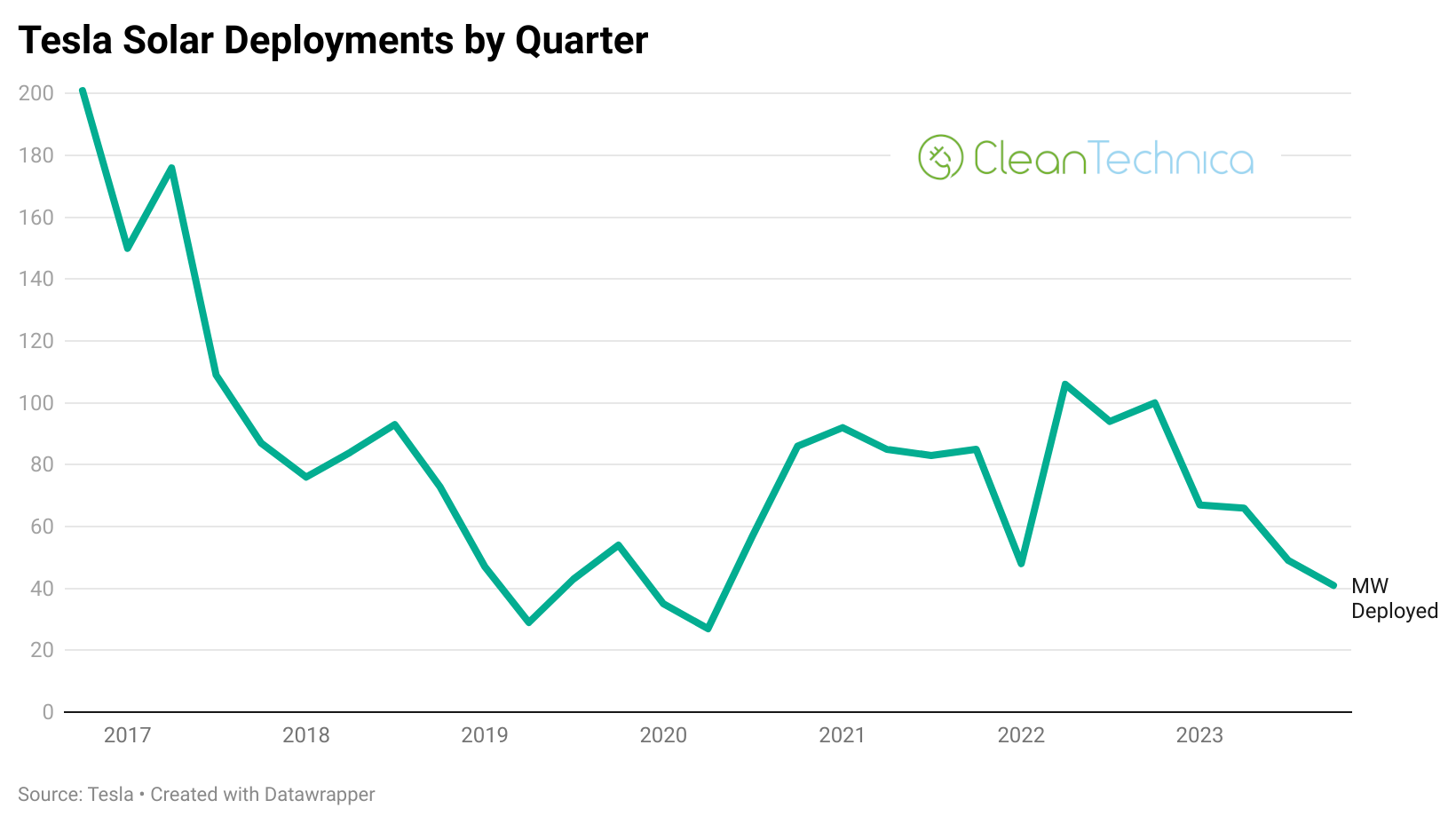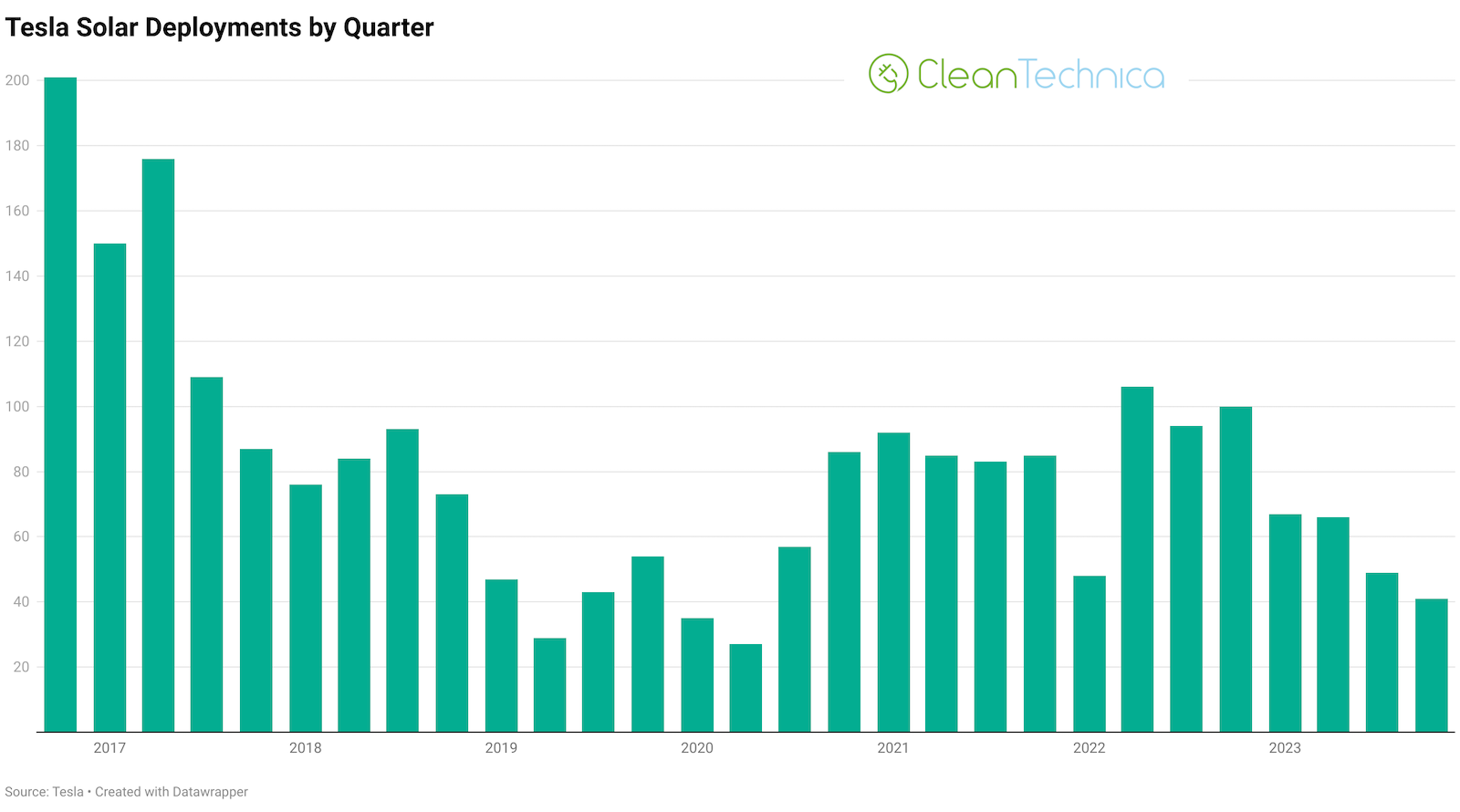Sign up for daily news updates from CleanTechnica on email. Or follow us on Google News!
I have to put my hands up — when Tesla acquired SolarCity in 2016, I supported the decision. Yes, Elon Musk was chairman of both companies. Yes, it was his cousins who were CEO and CTO, and had founded the company based on a suggestion from Elon Musk at Burning Man. Yes, Tesla was saving SolarCity financially in key ways. Nonetheless, I thought there was superb synergy between the companies and huge potential for more solar sales through the Tesla brand, sales network, and customer base.
Since then, Tesla has done some good stuff, but I have to say that I’ve been very disappointed in Tesla’s rather mild, disconnected, and overall lame efforts to sell more rooftop solar power.
Something I noticed a while back proved the point. Tesla’s quarterly rooftop solar power installations started dropping, and dropping, and dropping. At some point, I realized this had gone from an up & down segment of Tesla’s business to a long-term, significant decline.
I decided to go back and actually see how long Tesla had been seeing its solar business decline. Unfortunately, the findings weren’t uplifting. After it’s “last good quarter,” the 4th quarter of 2022, when 100 megawatts (MW) of solar power were installed, Tesla’s rooftop solar installations declined for at least 4 consecutive quarters. The company published the numbers for those 4 quarters, but then, in the next quarter, Q1 2024, Tesla simply lamented that its solar installations had declined year over year but stopped publishing those figures. Presumably, the rooftop solar sales decline continued — otherwise, Tesla would have highlighted a return to growth. But we just can’t be certain of that in every quarter.


In the “Assets” section of Tesla’s quarterly financial reports, the company does still publish “Solar energy systems, net.” And the totals for that have continued to decline in every quarter since then. So, if we presume continued quarter-over-quarter declines in solar power installations, that would be 8 straight quarters of decline (not making a judgement on Q1 2025 yet, but I’m not hopeful about that quarter either).
Aside from recent quarters, if you look at the full chart and graph above, it certainly stands out that Tesla’s solar installations have dropped off a cliff compared to where they were right after the SolarCity acquisition. In Q4 2016, 201 MW of solar power were installed. In Q1 2017, 150 MW were installed. In Q2 2017, 176 MW were installed. And then Tesla never got close to those figures again. In Q3 2017, 109 MW of solar power were installed, and Tesla has only broken 100 MW of new solar power capacity in a quarter twice since then.
The trend in those four quarters of 2023 — the last quarters Tesla published that data for — was bad, very had. If that trend continued in 2024, we have to assume Tesla’s solar business is a shell of what it was several (or even a few) years ago.
This is horrible to see for anyone cheering on cleantech growth. Much more solar power needs to be installed, and a massive slowdown in solar installations from a large company like Tesla just doesn’t make sense to me. Even not trying hard, it seems like the company should be able to find many customers ready to take the solar plunge.
Here’s the above chart and graph again in interactive form (best viewed on a real computer, not a phone):
Any other thoughts on these numbers and graphics?
Whether you have solar power or not, please complete our latest solar power survey.
Chip in a few dollars a month to help support independent cleantech coverage that helps to accelerate the cleantech revolution!
Have a tip for CleanTechnica? Want to advertise? Want to suggest a guest for our CleanTech Talk podcast? Contact us here.
Sign up for our daily newsletter for 15 new cleantech stories a day. Or sign up for our weekly one if daily is too frequent.
CleanTechnica uses affiliate links. See our policy here.
CleanTechnica’s Comment Policy

